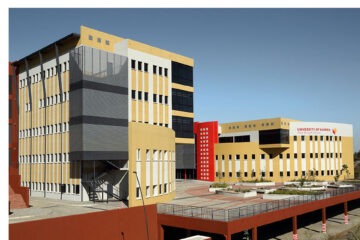Hertta-Maria Amutenja
Imagine needing essential information from your local town council, only to be told to visit the office or check a notice board.
This is the reality for many Namibians as local authorities across the country grapple with outdated communication methods, leaving residents in the dark at a time when digital engagement is no longer a luxury but a necessity.
Karasburg Town Council, for example, does not have social media profiles.
The town’s IT manager, Jay-Jay Paulse, acknowledged that due to limited resources, digital upgrades have been delayed.
“We are working on the website, but right now our resources are limited, and we haven’t received the budget approval yet,” he said.
Paulse said the municipality’s website, created by external people, has not been regularly updated or informative for residents.
According to the 2022 Local and Regional Government in Namibia annual governance assessment report by the Institute for Public Policy Research (IPPR), the social media accounts and websites of various councils have revealed a lack of consistent updates and functional platforms.
The poor state of online communication raises questions about the municipalities’ commitment to transparency and the accessibility of information.
One of the findings in the IPPR report is the lack of active social media engagement by several municipalities.
According to the report, the council’s website is poorly formatted and is populated with more information relating to Karasburg as a tourism attraction than about council activities.
While the site includes a list of names and photos of individuals serving on the town council, there are no contact details provided for residents seeking assistance.
Additionally, there is no information available on local authority services, ongoing development projects, or procurement processes.
The ‘Upcoming Events’ tab hasn’t received any updates in a while. Although residents can submit requests or questions via an online form under the ‘Contact Us’ tab, the website lacks sophisticated e-governance features such as online payment systems or more comprehensive governance interfaces.
Additionally, Katima Mulilo Municipality’s social media presence is undeveloped.
Its Twitter account has been dormant since 2019, with only 8 tweets posted from 2017 to 2019.
Since its creation in May 2024, the Instagram account has only 138 followers and very few posts.
Despite having a Facebook account with 1900 followers, the town has not posted any new content since October 2024.
The report also states that the website is underdeveloped, with many sections offering generic content that appears to be part of a standard template.
Efforts to reach the municipality’s CEO, Raphael Liswaniso, were unsuccessful by the time of publication.
In addition, the report from Gobabis Municipality reveals that, despite maintaining an active Facebook presence with 4700 followers and 160 posts during the review period, the municipality has struggled with maintaining other platforms.
Its Twitter account remains dormant, with only 12 tweets posted since 2021, and its Instagram account, though active, has only 206 followers and 15 posts since November 2021.
Regarding the website, the report states that the municipality’s official website is functional but provides limited information. Notably, the website does not have details on the current mayor or CEO, and contact information for councillors is absent.
However, Gobabis municipality has provided an update on the situation.
According to spokesperson Frederick Ndeutapo Ueitele, the municipality had entered into an agreement with Loop Technologies in 2020 for the development and maintenance of its website.
However, Loop Technologies did not receive payments due to internal leadership changes, which included the suspension of senior employees and the death of the former CEO.
“The municipality could not pay for four years, and all communications from Loop Technologies were ignored,” Ueitele said.
He said, that as of 18 November 2024, Loop Technologies presented a way forward to the municipality’s councillors and officials, and Ueitele hopes that things will be back to normal by the end of 2024.
Ueitele said that as for social media, Gobabis currently only uses Facebook to disseminate information and engage with the community.
“Facebook is the only social media platform that the Municipality of Gobabis has to disseminate info to the community,” Ueitele said.
He added that the municipality plans to bring on interns in communications or public relations to assist in managing the municipality’s online presence and is considering expanding to Instagram and X (formerly Twitter).
The online presence of Grootfontein Municipality has also drawn criticism.
The municipality’s website is outdated and contains very limited information. With the exception of the ‘Home’ tab, which includes a brief town biography, mission and values, and the functions of various departments, most other sections are non-operational.
The municipality’s Facebook page has nearly 7 000 followers, with over 200 posts covering community events, service updates, and local developments. However, its Twitter account has been inactive since 2021, with only 12 tweets posted over two years.
Similarly, since its launch in November 2021, the municipality’s Instagram account has only 305 followers and 15 posts, with its last post being in April 2023.
Acting CEO Indileni Lungameni of Grootfontein explained that Facebook is the platform most used by the community.
“We are also concentrating on WhatsApp to reach more people, as it allows quicker communication,” he said.
While the municipality is focusing on improving its social media engagement, Lungameni noted that the municipality is also working on revamping its website with assistance from the Office of the Prime Minister.
The municipality has scheduled a web development training session for December.



